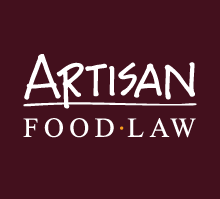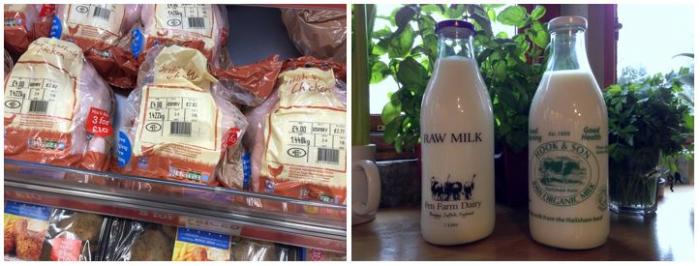Supermarket chicken at least 62 times riskier than raw drinking milk
Comparisons can be fraught with difficulty, but all food carries some degree of risk and all risks are relative. Supermarket chicken and raw drinking milk are two foods in the news headlines recently, how do they compare?
The British Poultry Council estimates that in 2013 about 870 million chickens were bred, hatched, reared, and slaughtered in the UK and the equivalent of another 400 million birds were imported, mainly from Europe. A total of 1,270 million.
The Food Standards Agency (FSA) reports that Campylobacter is responsible for more than 280,000 cases of food poisoning each year, causes more than 100 deaths a year and costs the UK economy about £900 million.
Roughly 80% of campylobacter poisoning in the UK comes from contaminated poultry. Campylobacter is also found, according to the FSA, in red meat, raw or unpasteurised milk and untreated water.
These figures suggest chicken is responsible for 224,000 cases of Campylobacter poisoning and 80 deaths a year. That makes one case of poisoning for every 5,670 chickens and almost 3.5 million are sold every day.
Since 2002, at a very conservative estimate, well over 10 million litres of raw milk have been consumed without a single reported case of Campylobacter or any other form of food poisoning. On this basis, the figures would speak for themselves so far as the risks associated with raw drinking milk relative to supermarket chicken are concerned. In November 2014, however, the FSA reported on three separate incidents involving six cases of E. coli O157 potentially linked to the consumption of raw drinking milk, which, if confirmed, would make them the only cases in the last 13 years.
There are no official figures for raw milk sales, but best estimates suggest that around 1.2 million litres or just over 2.1 million pints of raw drinking milk are presently consumed in the UK every year. In the worst case scenario which assumes the cases reported last year are confirmed, this would make one case of food poisoning from all sources, not just Campylobacter, for every 350,000 pints of raw drinking milk sold. In short, supermarket chicken carries 62 times the risk of raw milk, although in truth, chicken is far riskier than this comparison suggests.
The result is not surprising and is consistent with recent studies which found risk estimates for Campylobacter in raw milk 57 to 1,181 times lower than for home-cooked chicken, and even 6 to 28 times lower than for leafy green salads.*
Earlier this year the European Food Safety Authority (EFSA) published a long-awaited and much anticipated scientific opinion on the health risks associated with raw milk. It proved, however, to be something of a damp squib. The report contained nothing we did not already know and studiously avoided any calculation of risk.
All food carries a risk. Simple logic dictates that the handling methods of factory farmed intensively reared supermarket chicken would carry a high risk of contamination. It turns out to be true. Raw drinking milk is produced on a small to modest scale by dedicated family farms which operate under stringent conditions and to the highest standards. A very different risk profile.
The processed milk industry fosters the paranoia which surrounds the risks associated with raw milk at every opportunity for commercial advantage. The FSA, which extols the virtues of placing a strong emphasis on science and evidence-based approaches, appears only too willing to put them aside and help fuel the paranoia.
It’s time we got the risk associated with raw drinking milk into perspective. There are risks but these are well understood and addressed by effective risk management strategies. Raw drinking milk is a relatively low-risk food.
* Ijaz N, ‘Canada’s ‘Other’ Illegal White Substance: Evidence, Economics and Raw Milk Policy’, Health Law Review, Volume 22(1), pp26-39, 2014





